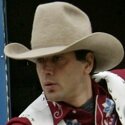No End In Sight
¶ 1 Leave a comment on paragraph 1 0  ABSTRACT: What is a networked narrative? In what respect does it differ from a hypernarrative? And “what is an author” when a text is no longer attached to a physical support, but is processed and formatted through layers and layers of code? This chapter of Networked tries to tackle these difficult questions by arguing that there exists a set of online narratives which revive the unity of pragmatic and denotative knowledge that once belonged to oral culture. When a network lacks a center or a leader, narratives that are truly open to participation function as a cohesive factor, holding together various nodes and components of the network. The chapter illustrates those concepts by analyzing different types of networked narratives, with a specific focus on hacktivism and the net.art of the last decade.
ABSTRACT: What is a networked narrative? In what respect does it differ from a hypernarrative? And “what is an author” when a text is no longer attached to a physical support, but is processed and formatted through layers and layers of code? This chapter of Networked tries to tackle these difficult questions by arguing that there exists a set of online narratives which revive the unity of pragmatic and denotative knowledge that once belonged to oral culture. When a network lacks a center or a leader, narratives that are truly open to participation function as a cohesive factor, holding together various nodes and components of the network. The chapter illustrates those concepts by analyzing different types of networked narratives, with a specific focus on hacktivism and the net.art of the last decade.
¶ 2 Leave a comment on paragraph 2 0 To comment on a paragraph, simply click on the speech bubble next to the paragraph number on the right.
» Read | Write This Chapter ›
¶ 3 Leave a comment on paragraph 3 0  BIOGRAPHY: Marco Deseriis a.k.a. Snafu is a Ph.D. candidate in the Department of Media, Culture, and Communication at New York University.
BIOGRAPHY: Marco Deseriis a.k.a. Snafu is a Ph.D. candidate in the Department of Media, Culture, and Communication at New York University.
¶ 4 Leave a comment on paragraph 4 0 He has a background in journalism and has co-authored, along with Giuseppe Marano, Net.Art: L’arte della Connessione [Net.Art: The Art of Connecting] (Shake, 2003-2008), the first Italian book on net.art, which explores the link between the heritage of the avant-gardes and technological innovation.
¶ 5 Leave a comment on paragraph 5 0 From 2000 through 2002 he has been involved with the organization of the net art festival Digital-Is-Not-Analog and, since 2004, has been advising the festival of “culture jamming and radical entertainment” The Influencers, hosted by the Centre of Contemporary Culture of Barcelona (CCCB), Spain. Between 2002 and 2004 he also collaborated with 0100101110101101.org and The Yes Men on projects such as Nikeground (2003) and Yes Bush Can! (2004). In the same period he lectured in media art festivals and conferences including TILT (Sydney, 2001), Transmediale (Berlin, 2002), Read Me! (Moscow, 2002), World Information (Novi Sad-Belgrade, 2003), the 50th Venice Biennale (2003) and Free Bitflows (Vienna, 2004).
¶ 6 Leave a comment on paragraph 6 0 Before moving to New York City in 2005, he co-authored, along with Domenico Quaranta and Luca Lampo, the art catalogue Connessioni Leggendarie: Net Art, 1995-2005 for the homonymous exhibition at the Mediateca Santa Teresa in Milano, and translated into Italian John Pilger’s Hidden Agendas (Fandango, 2003), Geert Lovink’s My First Recession (Apogeo, 2003), McKenzie Wark’s A Hacker Manifesto (Feltrinelli, 2005), and Kevin Mitnick’s The Art of Intrusion (Feltrinelli, 2006).
¶ 7 Leave a comment on paragraph 7 0 In 2006 he sat on the Selection Committee of the Netarts.org Grand Prize, assigned to the most innovative net art projects by the Machida City Museum of Graphic Arts of Tokyo. In 2008 and 2009 the NYU Council for Media & Culture awarded him two grants to program the conference Radars & Fences investigating the possible collisions between the Foucauldian notion of disciplinary society and the Deleuzian “control societies” across different fields such as the border, the media, the biotech industry, and the military.
¶ 8 Leave a comment on paragraph 8 0 As a Ph.D. student, he has been teaching a number of undergraduate classes in his own Department, and lectured in various academic conferences, including Harvard University and the Cultural Studies Association. Most of his writings are archived on his blog, Mythopoesis.
¶ 9 Leave a comment on paragraph 9 0 To comment on a paragraph, simply click on the speech bubble next to the paragraph number on the right.
» Read | Write This Chapter ›
¶ 10 Leave a comment on paragraph 10 0






